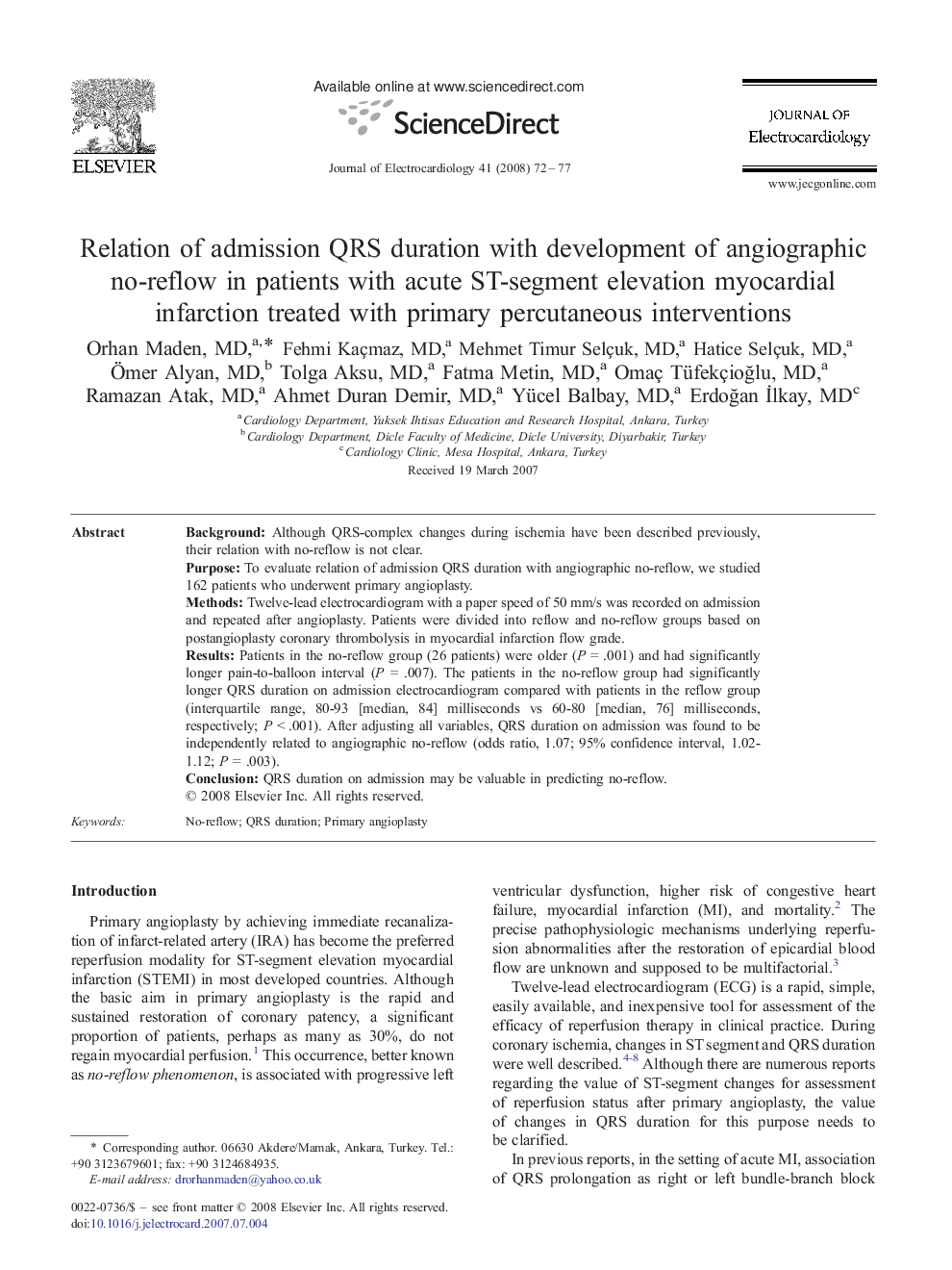| کد مقاله | کد نشریه | سال انتشار | مقاله انگلیسی | نسخه تمام متن |
|---|---|---|---|---|
| 2969050 | 1178892 | 2008 | 6 صفحه PDF | دانلود رایگان |

BackgroundAlthough QRS-complex changes during ischemia have been described previously, their relation with no-reflow is not clear.PurposeTo evaluate relation of admission QRS duration with angiographic no-reflow, we studied 162 patients who underwent primary angioplasty.MethodsTwelve-lead electrocardiogram with a paper speed of 50 mm/s was recorded on admission and repeated after angioplasty. Patients were divided into reflow and no-reflow groups based on postangioplasty coronary thrombolysis in myocardial infarction flow grade.ResultsPatients in the no-reflow group (26 patients) were older (P = .001) and had significantly longer pain-to-balloon interval (P = .007). The patients in the no-reflow group had significantly longer QRS duration on admission electrocardiogram compared with patients in the reflow group (interquartile range, 80-93 [median, 84] milliseconds vs 60-80 [median, 76] milliseconds, respectively; P < .001). After adjusting all variables, QRS duration on admission was found to be independently related to angiographic no-reflow (odds ratio, 1.07; 95% confidence interval, 1.02-1.12; P = .003).ConclusionQRS duration on admission may be valuable in predicting no-reflow.
Journal: Journal of Electrocardiology - Volume 41, Issue 1, January–February 2008, Pages 72–77